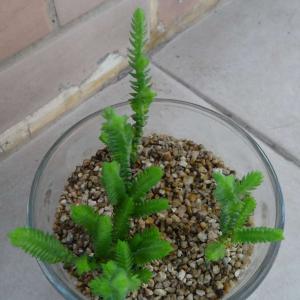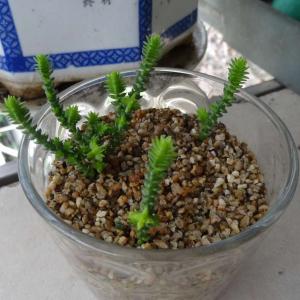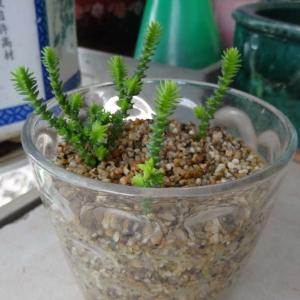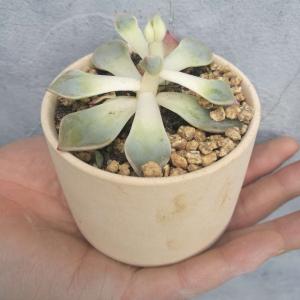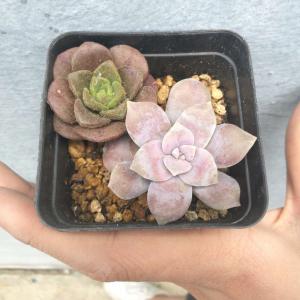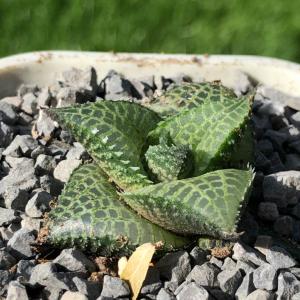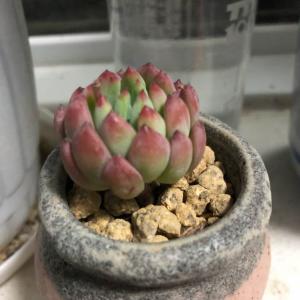文章
Miss Chen
2018年05月24日

Description: This perennial wildflower is 2-3' tall and usually unbranched. The central stem is light green, terete or angular, and glabrous to hairy; it has a tendency to zigzag between the alternate leaves. The leaf blades are 2-5" long and 1-4" across, becoming shorter and more narrow where the flowers occur; they areFlowering Plant widely spreading. The lower to middle leaves are ovate to broadly ovate, while the upper leaves are more lanceolate. The leaf margins are coarsely serrated. The upper surfaces of the leaves are medium to dark green and glabrous, while their lowers surfaces are more pale and glabrous to slightly hairy. The petioles are ¼–1½" long and somewhat winged near the bases of the leaf blades. At the apex of the central stem, there is a terminal inflorescence about 1½–5" long and about one-third as much across. This inflorescence is either a raceme or narrow panicle of flowerheads. There are also smaller axillary racemes about ½–1½" long that develop from the middle to upper leaves; they are shorter than the leaves. The branches of each inflorescence are light green and glabrous. Each flowerhead is about ¼" across or a little less, consisting of 3-4 yellow ray florets, 4-8 yellow disk florets, and several series of floral bracts at its base. The floral bracts are light green and appressed. The blooming period occurs from late summer to early fall and lasts about 1 month. Both ray and disk florets are fertile. During the fall, the florets are replaced by achenes with small tufts of hair; they are distributed by the wind. The small achenes are bullet-shaped and pubescent. The root system is fibrous and rhizomatous. Vegetative colonies of plants are sometimes formed from the spreading rhizomes.
Cultivation: The preference is light to medium shade, moist to dry-mesic conditions in sheltered situations, and fertile loamy soil with decaying organic matter. This is one of the most shade-tolerant goldenrods.
Range & Habitat: The native Zigzag Goldenrod is occasional in central and northern Illinois, becoming uncommon or absent in the southern section of the state (see Distribution Map). Habitats include rich deciduous woodlands, protected wooded slopes facing north or east, calcareous seeps in wooded areas, low areas along woodland streams, shaded limestone cliffs, and edges of limestone glades. This wildflower is usually found in higher quality natural areas.
Faunal Associations: The flowerheads are pollinated by many kinds of insects, including long-tongued bees, small-tongued bees, wasps, flies, and butterflies. Several bees are oligoleges of Solidago spp. (Goldenrods). These species include: Andrena hirticincta, Andrena nubecula, Andrena placata, Andrena simplex, Andrena solidaginis, and Colletes simulans armata. Many insects feed on the leaves, flowers, seeds, and roots of goldenrods. These insect feeders include plant bugs, stink bugs, aphids, leaf beetles, and the caterpillars of many moths (see the Moth Table and the Insect Table for a listing of these species). These insects are a source of food to many woodland songbirds and some upland gamebirds. White-tailed Deer readily browse on the foliage of Zigzag Goldenrod.

Photographic Location: A wooded slope at Turkey Run State Park in west-central Indiana.
Comments: Zigzag Goldenrod is a member of a small group of woodland goldenrods (Solidago spp.); other species in this group include Solidago caesia (Bluestem Goldenrod) and Solidago ulmifolia (Elm-Leaved Goldenrod). Zigzag Goldenrod often occurs more moist habitats than the latter two goldenrods, but it also occurs in drier areas of woodlands that are sheltered from the prevailing winds and afternoon sunlight. Because of its broad coarsely toothed leaves and axillary racemes of flowerheads, it is one of the easiest goldenrods to identify. Another common name of this species is Broad-Leaved Goldenrod.
Cultivation: The preference is light to medium shade, moist to dry-mesic conditions in sheltered situations, and fertile loamy soil with decaying organic matter. This is one of the most shade-tolerant goldenrods.
Range & Habitat: The native Zigzag Goldenrod is occasional in central and northern Illinois, becoming uncommon or absent in the southern section of the state (see Distribution Map). Habitats include rich deciduous woodlands, protected wooded slopes facing north or east, calcareous seeps in wooded areas, low areas along woodland streams, shaded limestone cliffs, and edges of limestone glades. This wildflower is usually found in higher quality natural areas.
Faunal Associations: The flowerheads are pollinated by many kinds of insects, including long-tongued bees, small-tongued bees, wasps, flies, and butterflies. Several bees are oligoleges of Solidago spp. (Goldenrods). These species include: Andrena hirticincta, Andrena nubecula, Andrena placata, Andrena simplex, Andrena solidaginis, and Colletes simulans armata. Many insects feed on the leaves, flowers, seeds, and roots of goldenrods. These insect feeders include plant bugs, stink bugs, aphids, leaf beetles, and the caterpillars of many moths (see the Moth Table and the Insect Table for a listing of these species). These insects are a source of food to many woodland songbirds and some upland gamebirds. White-tailed Deer readily browse on the foliage of Zigzag Goldenrod.

Photographic Location: A wooded slope at Turkey Run State Park in west-central Indiana.
Comments: Zigzag Goldenrod is a member of a small group of woodland goldenrods (Solidago spp.); other species in this group include Solidago caesia (Bluestem Goldenrod) and Solidago ulmifolia (Elm-Leaved Goldenrod). Zigzag Goldenrod often occurs more moist habitats than the latter two goldenrods, but it also occurs in drier areas of woodlands that are sheltered from the prevailing winds and afternoon sunlight. Because of its broad coarsely toothed leaves and axillary racemes of flowerheads, it is one of the easiest goldenrods to identify. Another common name of this species is Broad-Leaved Goldenrod.
0
0
文章
Miss Chen
2018年05月24日

Description: This perennial herbaceous plant is 2–3½' long and more or less erect. The central stem is light green, hairless, terete, and unbranched. Alternate leaves occur along the entire length of the central stem. However, toward the base of the stem, these leaves are reduced to membranous bracts without petioles. For fully developed leaves, their blades are 2½–5" long and 1½–3" across; they are ovate in shape and toothless along their margins. Sometimes the leaf margins bend downward and inward. The leaf bases are rounded to truncate, while their tips are acute. The upper leaf surface is medium green, hairless, and shiny, while the lower leaf surface is whitish green, finely pubescent, and dull. Leaf venation is parallel. The petioles are usually as long as the leaf blades to which they are attached, or even longer. These petioles are light green or light reddish green, narrowly concave above, convex below, and hairless; they are ascending. Sometimes pairs of slender twining tendrils are produced from the axils of the upper leaves; such tendrils are few in number. Solitary umbels of flowers about 1½–3" across are produced from the lower bracts and above the petiole-bases of the lower to middle leaves on long ascending peduncles (floral stalks). These peduncles are up to 6" long, light green or light reddish green, terete, and hairless.
Each umbel has 15-45 flowers on slender pedicels (floral stalklets). Because this plant is dioecious, some plants produce only male (staminate) flowers, while other plants produce only female (pistillate) flowers. Each male flower has 6 yellowish green or green spreading tepals and 6 stamens with whitish or yellowish anthers. Each female flower has 6 yellowish green or green spreading tepals and a green central ovary with 3 prominent stigmas. The tepals of both male and female flowers are elliptic, oblong-lanceolate, or oblong-oblanceolate in shape. Both male and female flowers are 6-8 mm. (1/4"–1/3") across. The blooming period occurs from late spring to early summer, lasting about 3 weeks. The flowers have a mild carrion-like odor. Afterwards, the female flowers are replaced by berries. At maturity, these berries are 6-8 mm. (1/4"–1/3") across, blue-violet, and globoid in shape. The interior of each berry is juicy and contains 1-5 seeds. The root stock is tuberous.
Cultivation: The preference is partial sun to light shade, moist to mesic conditions, and loamy soil with ample amounts of organic matter. Growth and development are very rapid during the spring, but once the flowers and immature fruits are produced, there is little new growth.

Range & Habitat: Illinois Carrion Flower (Smilax illinoensis) is widely scattered throughout Illinois, where it is native and uncommon (see Distribution Map). Habitats include woodlands in river valleys, wooded areas along roads, and thickets. Southern Illinois lies along the southern range-limit for this species, which occurs primarily in the Upper Midwest in the Great Lakes region (eastern Minnesota, Wisconsin, Michigan, and northern Illinois). Illinois Carrion Flower is found in both higher quality natural areas and more degraded habitats with a history of light to moderate disturbance. It probably benefits from occasional wildfires.
Faunal Associations: The nectar and pollen of the flowers attract many kinds of flies, including blow flies (Calliphora spp., Lucilia spp.), Muscid flies, and flesh flies (Helicobia spp., Sarcophaga spp.). Halictid bees and miscellaneous beetles also visit the flowers to a lesser extent. Various insects feeds on the foliage or suck plant juices from Smilax spp. (Greenbrier, Carrion Flower). These insect species include Neoprociphilus aceris (Woolly Maple Aphid), the larvae of gall flies (Cecidomyiidae), the larvae of several moths, and others (see the Insect Table for more information). White-tailed Deer like to browse on the foliage of Smilax spp., especially non-thorny Carrion Flower species. Mammals that eat the berries include the Virginia Opossum, Raccoon, Fox Squirrel, and American Black Bear. In addition, the berries are often eaten by such upland gamebirds and fructivorous songbirds as the Cedar Waxwing, Northern Cardinal, Gray Catbird, Veery, Hermit Thrush, American Robin, Ruffed Grouse, and Wild Turkey. The Ruffed Grouse and Wild Turkey also feed on the young leaves (see Bird Table).

Photographic Location: A wooded area near a river and a roadside in rural Champaign County, Illinois.
Comments: Illinois Carrion Flower (Smilax illinoensis) was not recognized as a distinct species until 1968. It has characteristics that are intermediate between the Common Carrion Flower (Smilax lasioneuron) and Upright Carrion Flower (Smilax ecirrhata). It is possible that Illinois Carrion Flower is a naturally occurring and well-established hybrid between these two species. Common Carrion Flower is a sprawling vine up to 8' long that produces abundant tendrils. It has petioles that are shorter than the leaf blades and its umbels tend to have more flowers or fruits than those of Illinois Carrion Flower. Upright Carrion Flower can be distinguished by its slightly wider leaves that have blunt tips and slightly cordate bases. The petioles of its leaves are shorter than the blades. This latter species never produces tendrils, it tends to be a little shorter in height, and its umbels tend to have fewer flowers (usually less than 20). In contrast, Illinois Carrion Flower has leaves with more tapered acute tips and rounded to truncate bases; its petioles are usually as long or longer than its leaves, and its umbels usually have 20 or more flowers.
Each umbel has 15-45 flowers on slender pedicels (floral stalklets). Because this plant is dioecious, some plants produce only male (staminate) flowers, while other plants produce only female (pistillate) flowers. Each male flower has 6 yellowish green or green spreading tepals and 6 stamens with whitish or yellowish anthers. Each female flower has 6 yellowish green or green spreading tepals and a green central ovary with 3 prominent stigmas. The tepals of both male and female flowers are elliptic, oblong-lanceolate, or oblong-oblanceolate in shape. Both male and female flowers are 6-8 mm. (1/4"–1/3") across. The blooming period occurs from late spring to early summer, lasting about 3 weeks. The flowers have a mild carrion-like odor. Afterwards, the female flowers are replaced by berries. At maturity, these berries are 6-8 mm. (1/4"–1/3") across, blue-violet, and globoid in shape. The interior of each berry is juicy and contains 1-5 seeds. The root stock is tuberous.
Cultivation: The preference is partial sun to light shade, moist to mesic conditions, and loamy soil with ample amounts of organic matter. Growth and development are very rapid during the spring, but once the flowers and immature fruits are produced, there is little new growth.

Range & Habitat: Illinois Carrion Flower (Smilax illinoensis) is widely scattered throughout Illinois, where it is native and uncommon (see Distribution Map). Habitats include woodlands in river valleys, wooded areas along roads, and thickets. Southern Illinois lies along the southern range-limit for this species, which occurs primarily in the Upper Midwest in the Great Lakes region (eastern Minnesota, Wisconsin, Michigan, and northern Illinois). Illinois Carrion Flower is found in both higher quality natural areas and more degraded habitats with a history of light to moderate disturbance. It probably benefits from occasional wildfires.
Faunal Associations: The nectar and pollen of the flowers attract many kinds of flies, including blow flies (Calliphora spp., Lucilia spp.), Muscid flies, and flesh flies (Helicobia spp., Sarcophaga spp.). Halictid bees and miscellaneous beetles also visit the flowers to a lesser extent. Various insects feeds on the foliage or suck plant juices from Smilax spp. (Greenbrier, Carrion Flower). These insect species include Neoprociphilus aceris (Woolly Maple Aphid), the larvae of gall flies (Cecidomyiidae), the larvae of several moths, and others (see the Insect Table for more information). White-tailed Deer like to browse on the foliage of Smilax spp., especially non-thorny Carrion Flower species. Mammals that eat the berries include the Virginia Opossum, Raccoon, Fox Squirrel, and American Black Bear. In addition, the berries are often eaten by such upland gamebirds and fructivorous songbirds as the Cedar Waxwing, Northern Cardinal, Gray Catbird, Veery, Hermit Thrush, American Robin, Ruffed Grouse, and Wild Turkey. The Ruffed Grouse and Wild Turkey also feed on the young leaves (see Bird Table).

Photographic Location: A wooded area near a river and a roadside in rural Champaign County, Illinois.
Comments: Illinois Carrion Flower (Smilax illinoensis) was not recognized as a distinct species until 1968. It has characteristics that are intermediate between the Common Carrion Flower (Smilax lasioneuron) and Upright Carrion Flower (Smilax ecirrhata). It is possible that Illinois Carrion Flower is a naturally occurring and well-established hybrid between these two species. Common Carrion Flower is a sprawling vine up to 8' long that produces abundant tendrils. It has petioles that are shorter than the leaf blades and its umbels tend to have more flowers or fruits than those of Illinois Carrion Flower. Upright Carrion Flower can be distinguished by its slightly wider leaves that have blunt tips and slightly cordate bases. The petioles of its leaves are shorter than the blades. This latter species never produces tendrils, it tends to be a little shorter in height, and its umbels tend to have fewer flowers (usually less than 20). In contrast, Illinois Carrion Flower has leaves with more tapered acute tips and rounded to truncate bases; its petioles are usually as long or longer than its leaves, and its umbels usually have 20 or more flowers.
0
0
文章
权问薇
2018年05月24日


一、养殖环境
1、土壤:养富贵竹最好使用肥沃且富含腐殖质的土壤。
2、施肥:富贵竹不耐浓度大的肥料和生肥,在春夏秋季每15天用施一次复合肥,可以让它生长的更好,在冬季一般不用给它施肥。
3、温度:以20-30℃最佳,最低不能低于5℃,若温度较低就会被冻伤,茎会变黄,还会导致烂根。
4、浇水:盆土要经常保持半湿半干的状态,夏季温度较高时可以间隔1天浇水1次,春秋季节每周浇水1次,冬季一般20天浇水一次即可。在平时要经常向植株或其四周喷水,可以使叶片更干净,也能预防因缺水而导致叶子变枯黄。
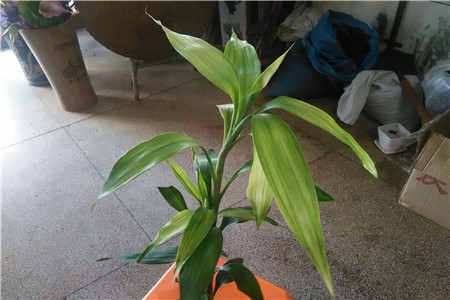
二、繁殖方法
1、土培:在春季时剪20-25厘米的嫩茎,然后用高锰酸钾泡30分钟左右,等晾干之后就可以插到盆土中了,每天浇1次水,一个月左右,它就能生根。
2、水培:剪取分生带茎尖的分支,将四周的叶子剪掉插入水中,将温度控制在25℃,15天就会生根。
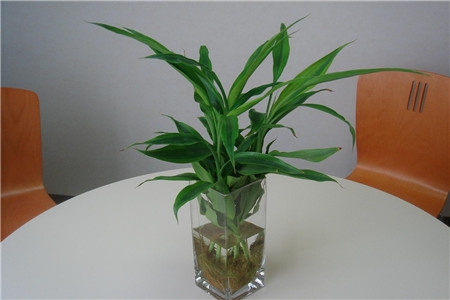
三、常见病虫害
主要的病虫害有叶斑病、炭疽病、叶螨、介壳虫等,出现虫害后可以人工捕捉,当出现病害时可以用百菌清或甲基托布津交替喷洒,间隔为5-7天喷洒一次。
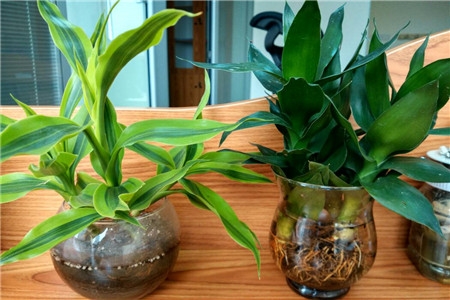
2
3
文章
Miss Chen
2018年05月23日

Description: This herbaceous perennial plant is unbranched and up to 2½' tall. The central stem is ascending, rather than stiffly erect. It is green to light green, slightly hairy, and sometimes zigzags between the alternate leaves. These leaves are up to 6" long and 3" across. They are broadly ovate, smooth along the margins, and usually glabrous on the upper surface. Their venation is parallel, while at the base they are mostly sessile against the stem. The central stem terminates in a rather flat panicle of 20-80 white flowers. This panicle is about 4" long and 2" across; its whitish green stalks are softly hairy. Each flower is about 1/6" across, consisting of 6 tepals, 6 stamens, and a central pistil with a short stout style. These floral parts are white, except for the anthers of the stamens, which are cream or pale yellow. The filaments of the stamens are narrowly triangular, while the tepals are oblong-linear.
The blooming period occurs from late spring to early summer and lasts about 3 weeks. Each flower is replaced by a few-seeded berry. Individual berries are about ¼" across and globular; they become bright red, or red and purple-striped at maturity. The root system consists of stout rhizomes with secondary fibrous roots. This plant sometimes forms loose vegetative colonies.
Cultivation: The preference is light shade to partial sun, moist to slightly dry conditions, and a fertile loamy soil with abundant organic material (i.e., decaying leaves). Sandy and rocky soil are also tolerated.
Range & Habitat: False Solomon's Seal is a common plant that occurs in every county of Illinois (see Distribution Map), where it is native. Habitats include mesic to dry deciduous woodlands, rocky wooded slopes, bluffs, and Black Oak foredunes near Lake Michigan.

Faunal Associations: The flowers are pollinated by small bees, flies, and beetles. The bees collect pollen from the flowers, while flies and beetles feed on pollen. The flowers appear to attract more than the usual number of beetles, including Seed Beetles, Long-Horned Beetles, Click Beetles, Blister Beetles, Tumbling Flower Beetles, Flower Scarab Beetles (Trichiotinus spp.), and Pedilid Beetles (Pedilus spp.). The berries are eaten occasionally by woodland birds, including the Ruffed Grouse and Veery; they are also eaten by the White-Footed Mouse. These animals spread the seeds into new areas. The foliage is browsed occasionally by the White-Tailed Deer.
Photographic Location: Along the slope of a wooded bluff in Vermilion County, Illinois.

Comments: This interesting plant produces attractive flowers and berries. It has a similar appearance to Smilacina stellata (Starry False Solomon's Seal), but the latter species produces a raceme of flowers, rather than a branching panicle. The flowers of Starry False Solomon's Seal are somewhat larger in size and fewer in number (less than 20 per raceme), and its leaves are more narrow. Another species, Polygonatum commutatum (Solomon's Seal), has very similar foliage, but its leaves slightly clasp the central stem. The flowers of Solomon's Seal have a very different appearance; their corolla is tubular-shaped and greenish white. Furthermore, the flowers of Solomon's Seal hang from the central stem in small umbels of 1-5 flowers; these umbels develop from the base of each leaf. The scientific name of Smilacina racemosa is something of a misnomer as this species produces flowers in panicles, rather than racemes. Another common name for this species is Solomon's Plume, although it appears to be passing out of fashion.
The blooming period occurs from late spring to early summer and lasts about 3 weeks. Each flower is replaced by a few-seeded berry. Individual berries are about ¼" across and globular; they become bright red, or red and purple-striped at maturity. The root system consists of stout rhizomes with secondary fibrous roots. This plant sometimes forms loose vegetative colonies.
Cultivation: The preference is light shade to partial sun, moist to slightly dry conditions, and a fertile loamy soil with abundant organic material (i.e., decaying leaves). Sandy and rocky soil are also tolerated.
Range & Habitat: False Solomon's Seal is a common plant that occurs in every county of Illinois (see Distribution Map), where it is native. Habitats include mesic to dry deciduous woodlands, rocky wooded slopes, bluffs, and Black Oak foredunes near Lake Michigan.

Faunal Associations: The flowers are pollinated by small bees, flies, and beetles. The bees collect pollen from the flowers, while flies and beetles feed on pollen. The flowers appear to attract more than the usual number of beetles, including Seed Beetles, Long-Horned Beetles, Click Beetles, Blister Beetles, Tumbling Flower Beetles, Flower Scarab Beetles (Trichiotinus spp.), and Pedilid Beetles (Pedilus spp.). The berries are eaten occasionally by woodland birds, including the Ruffed Grouse and Veery; they are also eaten by the White-Footed Mouse. These animals spread the seeds into new areas. The foliage is browsed occasionally by the White-Tailed Deer.
Photographic Location: Along the slope of a wooded bluff in Vermilion County, Illinois.

Comments: This interesting plant produces attractive flowers and berries. It has a similar appearance to Smilacina stellata (Starry False Solomon's Seal), but the latter species produces a raceme of flowers, rather than a branching panicle. The flowers of Starry False Solomon's Seal are somewhat larger in size and fewer in number (less than 20 per raceme), and its leaves are more narrow. Another species, Polygonatum commutatum (Solomon's Seal), has very similar foliage, but its leaves slightly clasp the central stem. The flowers of Solomon's Seal have a very different appearance; their corolla is tubular-shaped and greenish white. Furthermore, the flowers of Solomon's Seal hang from the central stem in small umbels of 1-5 flowers; these umbels develop from the base of each leaf. The scientific name of Smilacina racemosa is something of a misnomer as this species produces flowers in panicles, rather than racemes. Another common name for this species is Solomon's Plume, although it appears to be passing out of fashion.
0
0
文章
Miss Chen
2018年05月23日

Description: This herbaceous plant is ½–2' tall and more or less erect. It branches at the base, where a tuft of basal leaves occurs, and toward the apex of the stems, where the flowers occur. The stems are terete and quite pubescent. The basal leaves and lower cauline leaves are up to 6" long and 1" across. They are medium to dark green, oblanceolate, and smooth along their margins. Each of these leaves tapers gradually to a petiole-like base. The upper cauline leaves are lanceolate or oblong, sessile, and smaller in size, otherwise they are similar to the lower leaves. The cauline leaves occur in opposite pairs along the stems; there are usually 2-4 pairs of cauline leaves per stem (rarely more). Young leaves are often finely pubescent, but they become nearly hairless with age. Each of the upper stems terminates in a cyme of 3-10 flowers; both the branches and pedicels of each cyme are terete and quite pubescent. The flowers are loosely arranged in each cyme, which is often wider than it is tall.
Each flower is about ¾–1" long and 1–1½" across, consisting of 5 spreading red petals, a tubular green calyx, 10 stamens, and 3 styles. The petals are rather narrow and notched at their tips; at the base of each petal, there is a pair of small red teeth. The tubular calyx has several ridges along its length and several small teeth along its outer rim. The outer surface of this calyx is densely covered with a glandular pubescence that has a sticky texture. The blooming period occurs from late spring to mid-summer and lasts about 1½ months. Each flower is replaced by a seed capsule with 6 small teeth along its upper rim. It is broader toward the top than the bottom, and contains several seeds. Each seed is somewhat flattened and orbicular-reniform in shape; its surface is warty or pebbly. The root system consists of a taproot with secondary roots.
Cultivation: The preference is partial sun, mesic to dry conditions, and a rather poor soil containing too much sand, clay, or rocky material. Fire Pink can be short-lived as a perennial, but it occasionally reseeds itself.

Range & Habitat: The native Fire Pink is an uncommon plant that occurs in scattered areas of NE, central, and southern Illinois (see Distribution Map). Occasionally, small colonies of this species are discovered in new areas, although its population within the state isn't expanding. Habitats include openings in upland woodlands, rocky wooded slopes, thinly wooded bluffs, limestone and sandstone cliffs, and clay banks along trails in wooded areas. Fire Pink often occurs along slopes and barren areas where there is scant ground vegetation. Populations of this species will decline if the overhead canopy of trees becomes too dense; some disturbance from fire and other causes is probably beneficial.
Faunal Associations: Little information is available about floral-faunal relationships. The flowers are probably cross-pollinated by the Ruby-throated Hummingbird and various large butterflies, which seek nectar from the flowers. The sticky hairs on the surface of the calyx discourage ants from climbing up the flower to steal nectar.

Photographic Location: The upper slope of a wooded bluff in Vermilion County, Illinois, and a clay embankment along a trail in a wooded area of the same county.
Comments: Fire Pink produces spectacular red flowers. For some reason, it is not often seen in flower gardens, where introduced Pink species are typically grown. Another native species that occurs in Illinois, Silene regia (Royal Catchfly), has a somewhat similar appearance with striking red flowers, but it has 8 or more pairs of leaves along its stems and the tips of its petals are not notched. An introduced species with red flowers, Lychnis chalcedonica (Maltese Cross), is occasionally grown in flower gardens, from which it rarely escapes. Its flowers have petals that are even more deeply notched than those of Fire Pink. Maltese Cross produces its flowers in a dense globoid cluster at the apex of its central stem, and its ovate-lanceolate leaves are much broader at the base than those of Fire Pink.
Each flower is about ¾–1" long and 1–1½" across, consisting of 5 spreading red petals, a tubular green calyx, 10 stamens, and 3 styles. The petals are rather narrow and notched at their tips; at the base of each petal, there is a pair of small red teeth. The tubular calyx has several ridges along its length and several small teeth along its outer rim. The outer surface of this calyx is densely covered with a glandular pubescence that has a sticky texture. The blooming period occurs from late spring to mid-summer and lasts about 1½ months. Each flower is replaced by a seed capsule with 6 small teeth along its upper rim. It is broader toward the top than the bottom, and contains several seeds. Each seed is somewhat flattened and orbicular-reniform in shape; its surface is warty or pebbly. The root system consists of a taproot with secondary roots.
Cultivation: The preference is partial sun, mesic to dry conditions, and a rather poor soil containing too much sand, clay, or rocky material. Fire Pink can be short-lived as a perennial, but it occasionally reseeds itself.

Range & Habitat: The native Fire Pink is an uncommon plant that occurs in scattered areas of NE, central, and southern Illinois (see Distribution Map). Occasionally, small colonies of this species are discovered in new areas, although its population within the state isn't expanding. Habitats include openings in upland woodlands, rocky wooded slopes, thinly wooded bluffs, limestone and sandstone cliffs, and clay banks along trails in wooded areas. Fire Pink often occurs along slopes and barren areas where there is scant ground vegetation. Populations of this species will decline if the overhead canopy of trees becomes too dense; some disturbance from fire and other causes is probably beneficial.
Faunal Associations: Little information is available about floral-faunal relationships. The flowers are probably cross-pollinated by the Ruby-throated Hummingbird and various large butterflies, which seek nectar from the flowers. The sticky hairs on the surface of the calyx discourage ants from climbing up the flower to steal nectar.

Photographic Location: The upper slope of a wooded bluff in Vermilion County, Illinois, and a clay embankment along a trail in a wooded area of the same county.
Comments: Fire Pink produces spectacular red flowers. For some reason, it is not often seen in flower gardens, where introduced Pink species are typically grown. Another native species that occurs in Illinois, Silene regia (Royal Catchfly), has a somewhat similar appearance with striking red flowers, but it has 8 or more pairs of leaves along its stems and the tips of its petals are not notched. An introduced species with red flowers, Lychnis chalcedonica (Maltese Cross), is occasionally grown in flower gardens, from which it rarely escapes. Its flowers have petals that are even more deeply notched than those of Fire Pink. Maltese Cross produces its flowers in a dense globoid cluster at the apex of its central stem, and its ovate-lanceolate leaves are much broader at the base than those of Fire Pink.
0
0
文章
Miss Chen
2018年05月23日

Description: This herbaceous perennial plant is 1–2½' tall and usually erect. It is unbranched or branched sparingly. The terete central stem and any lateral stems are mostly pale green to pale reddish green, hairless to densely pubescent, and somewhat swollen at the bases of leaves, where it is sometimes reddish purple. The lowermost and uppermost leaves are usually opposite, while the middle leaves occur in whorls of 4. They are up to 4" long and 1½" across, elliptic or lanceolate in shape, smooth along the margins, and sessile. The upper surface of each leaf is yellowish green, greyish green, or medium green, and hairless, while the lower leaf surface is more pale and hairless to finely pubescent. The central stem terminates in a panicle of flowers up to 8" long and about 3-4" across. On robust plants, 1-2 additional panicles may be produced from upper lateral stems. Pairs of small leafy bracts occur wherever a panicle branches. The erect central stalk, ascending branches, and clustered pedicels of the panicle are pale to medium green, terete, and hairless to finely pubescent. The flowers occur individually or in groups of 2-3 at the tips of long lateral branches on short pedicels. These pedicels are less than ¼" long.
Each flower is about ¾" across, consisting of 5 white fringed petals, a light green calyx that is bell-shaped (campanulate) with 5 broad teeth along its upper rim, a pistil with 3 slender white styles, and 10 stamens with slender white filaments. Each fringed petal has 8-12 linear lobes along its broad outer edge, while at the base it becomes quite narrow. The outer surface of each calyx is light green and hairless to finely pubescent; it often has faint longitudinal veins that are a darker shade of green. The blooming period occurs during mid- to late summer, lasting about 3-4 weeks. There is no noticeable floral scent. The flowers remain open during the evening, night, and early morning. In the presence of bright sunlight, they have a tendency to close-up during the middle of the day. Each flower is replaced by an ovoid seed capsule with 6 teeth along its upper rim; each capsule contains several seeds. The flattened seeds are reniform or reniform-orbicular with a fine pebbly surface. The root system consists of a deep white taproot. An older plant may tiller from its base, sending up multiple stems from the same taproot. Starry Campion reproduces by reseeding itself.

Cultivation: The preference is light shade or partial sun, mesic to dry conditions, and soil containing loam, clay-loam, or a little rocky material. When exposed to full sunlight, the leaves become yellowish green and they are less attractive. Sometimes the stems lean sideways when this plant is grown in the fertile soil of flower gardens.
Range & Habitat: The native Starry Campion is widely distributed in Illinois, where it occurs occasionally in most counties (see Distribution Map). There are two varieties of Starry Campion that can be found throughout the state, Silene stellata stellata and Silene stellata scabrella. The typical variety of this species is hairless (or nearly so), while var. scabrella is quite pubescent, as indicated above. Habitats include upland rocky woodlands, wooded slopes, savannas, shaded banks of rivers, meadows near wooded areas, and cemetery prairies. This conservative species is usually found in higher quality natural areas. Fire and other kinds of disturbance are beneficial if they reduce dense shade from Acer saccharum (Sugar Maple) and invasive shrubs.

Faunal Associations: The flowers are pollinated primarily by moths and, to a lesser extent, by bumblebees. These insects suck nectar from the flowers. The caterpillars of a rare Noctuid moth, Hadena ectypa (Campion Coronet), feed primarily on the flowers and developing seed capsules of Starry Campion. This moth also sucks nectar from the flowers of this plant (Nelson, 2012). The caterpillars of a closely related moth, Hadena capsularis (Capsule Moth), feed on the flowers and developing seed capules of several species in the Pink family, including Silene spp. The caterpillars of this latter moth may also feed on Starry Campion. Another insect, Aphis sambuci (Elder Aphid), uses Silene spp. as summer hosts and feeds on the sap of their roots. Among vertebrate animals, White-tailed Deer occasionally chomp off the tops of Starry Campion (personal observation), even though its foliage, like other Silene spp., probably contains some saponins and alkaloids that are known to be at least mildly toxic.

Photographic Location: The wildflower garden at the apartment complex of the webmaster in Urbana, Illinois. The plants in the photographs are the pubescent variety of Starry Campion, or Silene stellata scabrella.
Comments: The flowers of Starry Campion are quite beautiful. It should be grown more often in flower gardens. This species is easy to identity because of its deeply fringed petals and whorled leaves. Other white-flowered Silene spp. (campions) lack deeply fringed petals and their leaves always occur in opposite pairs. While the flowers of Starry Campion are perfect (bisexual), the flowers of some campions are dioecious (individual plants have either all male flowers or all female flowers, but not both). An example of a dioecious species in this genus is the introduced Silene pratensis (Evening Campion).
Each flower is about ¾" across, consisting of 5 white fringed petals, a light green calyx that is bell-shaped (campanulate) with 5 broad teeth along its upper rim, a pistil with 3 slender white styles, and 10 stamens with slender white filaments. Each fringed petal has 8-12 linear lobes along its broad outer edge, while at the base it becomes quite narrow. The outer surface of each calyx is light green and hairless to finely pubescent; it often has faint longitudinal veins that are a darker shade of green. The blooming period occurs during mid- to late summer, lasting about 3-4 weeks. There is no noticeable floral scent. The flowers remain open during the evening, night, and early morning. In the presence of bright sunlight, they have a tendency to close-up during the middle of the day. Each flower is replaced by an ovoid seed capsule with 6 teeth along its upper rim; each capsule contains several seeds. The flattened seeds are reniform or reniform-orbicular with a fine pebbly surface. The root system consists of a deep white taproot. An older plant may tiller from its base, sending up multiple stems from the same taproot. Starry Campion reproduces by reseeding itself.

Cultivation: The preference is light shade or partial sun, mesic to dry conditions, and soil containing loam, clay-loam, or a little rocky material. When exposed to full sunlight, the leaves become yellowish green and they are less attractive. Sometimes the stems lean sideways when this plant is grown in the fertile soil of flower gardens.
Range & Habitat: The native Starry Campion is widely distributed in Illinois, where it occurs occasionally in most counties (see Distribution Map). There are two varieties of Starry Campion that can be found throughout the state, Silene stellata stellata and Silene stellata scabrella. The typical variety of this species is hairless (or nearly so), while var. scabrella is quite pubescent, as indicated above. Habitats include upland rocky woodlands, wooded slopes, savannas, shaded banks of rivers, meadows near wooded areas, and cemetery prairies. This conservative species is usually found in higher quality natural areas. Fire and other kinds of disturbance are beneficial if they reduce dense shade from Acer saccharum (Sugar Maple) and invasive shrubs.

Faunal Associations: The flowers are pollinated primarily by moths and, to a lesser extent, by bumblebees. These insects suck nectar from the flowers. The caterpillars of a rare Noctuid moth, Hadena ectypa (Campion Coronet), feed primarily on the flowers and developing seed capsules of Starry Campion. This moth also sucks nectar from the flowers of this plant (Nelson, 2012). The caterpillars of a closely related moth, Hadena capsularis (Capsule Moth), feed on the flowers and developing seed capules of several species in the Pink family, including Silene spp. The caterpillars of this latter moth may also feed on Starry Campion. Another insect, Aphis sambuci (Elder Aphid), uses Silene spp. as summer hosts and feeds on the sap of their roots. Among vertebrate animals, White-tailed Deer occasionally chomp off the tops of Starry Campion (personal observation), even though its foliage, like other Silene spp., probably contains some saponins and alkaloids that are known to be at least mildly toxic.

Photographic Location: The wildflower garden at the apartment complex of the webmaster in Urbana, Illinois. The plants in the photographs are the pubescent variety of Starry Campion, or Silene stellata scabrella.
Comments: The flowers of Starry Campion are quite beautiful. It should be grown more often in flower gardens. This species is easy to identity because of its deeply fringed petals and whorled leaves. Other white-flowered Silene spp. (campions) lack deeply fringed petals and their leaves always occur in opposite pairs. While the flowers of Starry Campion are perfect (bisexual), the flowers of some campions are dioecious (individual plants have either all male flowers or all female flowers, but not both). An example of a dioecious species in this genus is the introduced Silene pratensis (Evening Campion).
0
0
文章
权问薇
2018年05月23日


1、养殖环境
(1)土壤:主要要求是营养多、疏松透气、排水性等。可选择将腐叶土和园土混合。
(2)光照:植株喜光,需提供充足阳光,特别是成长期。在夏季,有时也需适当遮光。
(3)浇水:成长期要保持土壤湿润,但不积水。秋冬季减少浇水。
(4)湿度:夏季需得通过喷洒水等方式来增大湿度。
(5)施肥:主要需要的阶段是成长期。一般每半个月左右施加一次液肥就可满足要求。注意浓度别太高。

2、繁殖方法
(1)扦插繁殖:其为最主要的一个方法。在二月份前后进行。选择十到十五厘米左右的、健壮的,最好是老桩。将大概三分之一叶子剪掉,并把底部剪成一个斜口。基质最好是河沙,大概五到七厘米。将枝条插入,浇透水。注意进行遮荫,或将植株放在阴凉的地方。
(2)除了扦插法,常用的方法还有分株法、压条法等。
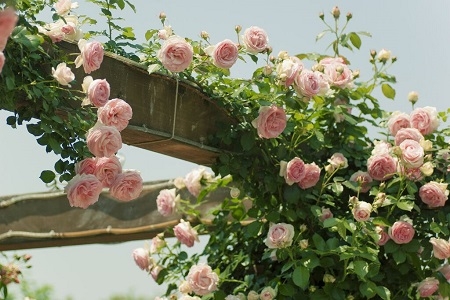
3、病害防治
植株病害多发,主要由真菌引起。将病叶子剪掉之后,可喷洒波尔多液。
4、修剪
植株萌芽成长能力强,所以需及时修剪,特别是在闷热、潮湿的环境下。还有开花过后,也需要进行一次修剪。

0
3
荣耀:学习了…







